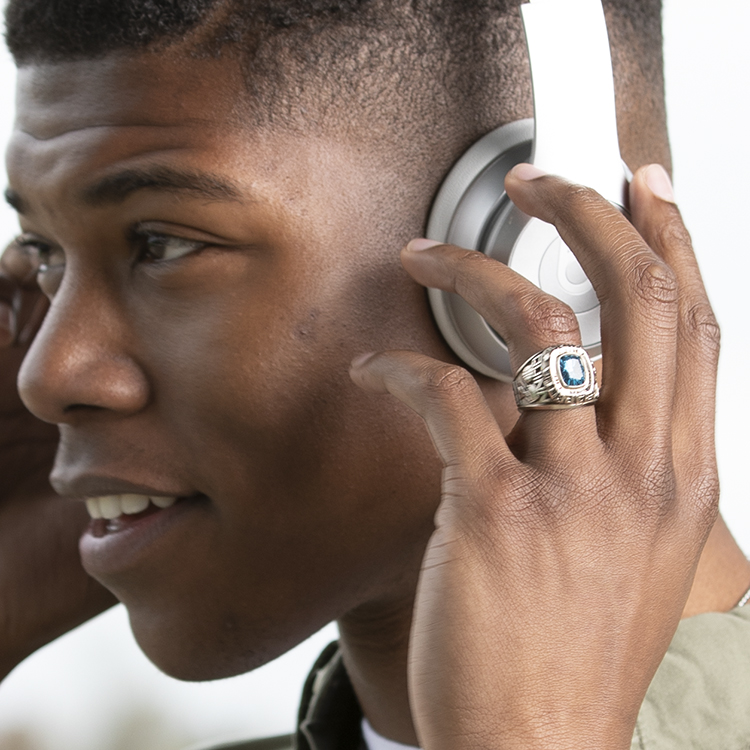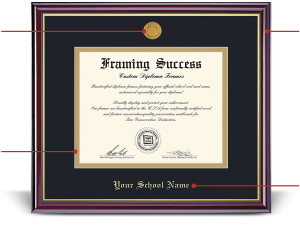Graduation Announcements
Mail announcements to family and friends two weeks before to two weeks after graduation. You may write “No gifts, please” at the bottom if you wish.
Announcement (Tissue) Inserts
If your order contains tissue inserts, place this translucent paper on the inside of your announcement.
Envelopes
The outer envelope, with the gummed flap, is the mailing envelope. Hand address it legibly, using black or blue ink. Abbreviations in the mailing address should be avoided:
Mr. John Smith
383 North Street
Louisville, Kentucky 55512 | Mr. and Mrs. Paul Jones
39 West 18th Street
Albany, New Jersey 77701 |
The inner envelope should bear the name of the addressee(s). This may be expressed informally as:
Aunt May and Uncle Bill
Mr. and Mrs. Johnson
Mary and Paul | John Smith
Grandmother
Miss Reagan |
Place the announcement in the inner envelope with the folded edge being inserted first, with the front of the announcement facing the flap. Then, apply a foil envelope seal, if included with your order.
Place the inside envelope facing toward the back of the outside envelope when inserting. Seal securely by moistening the gummed flap. Send via first class mail.
Thank You Notes
A short note of thanks, written by hand, should go to all who have sent a gift. Acknowledge the gift as promptly as possible after its receipt.
filed under:
Ring ceremonies typically take place in the fall of the school year. For the Juniors, they are celebrating their newly-gained status as upperclassmen, and for the Seniors, they are celebrating their final year in high school.

Traditionally it is just the students who participate in the ceremony, but for parents who also have a class ring from the same school, many times they are asked to wear their class rings to the ceremony.
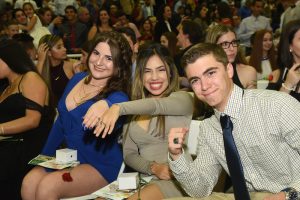
Ring ceremonies can vary from one school to the next but a classic ceremony includes inspirational speeches from staff/teachers and then the distribution of the rings.
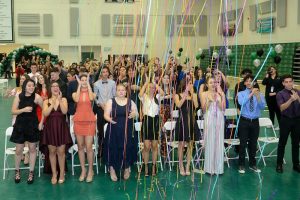
Each student’s name is called out and then that student goes up onto the stage to accept their ring. It is traditionally the teachers at the school who give the rings to the students. A student may request that a particular teacher give him or her their ring. The ring is in a closed box and the box stays closed as the student returns to their seat.
This continues until all the students have received their rings and are once again back in their seats. At this point all the students are asked to stand and then, all at once, they are asked to open their boxes and reveal their rings.
If the school is parochial, sometimes a blessing is bestowed upon the rings. Otherwise, at this point the celebration is complete and a short gathering of students, and parents, occurs with refreshments and students sharing the look of their rings with each other.
SHOP CLASS RINGS
filed under:
A frame is made up of several parts and each one contributes to the overall quality and protective nature of a frame.
Medallion:
Located at the top of the frame is a brilliant custom-minted medallion that features your school seal. They are available in silver or gold and can be enameled to increase their beauty.
Double matting:
The purpose of matting is both decorative as well as protective. Matting your diploma highlights it by adding size, color and depth. Double matting adds a second layer of protection as well as added space between your diploma and the glass frame.
Moulding:
Mouldings can be made from either wood or metal and are available in 24 different styles. Each moulding can also be decorated with three different fillets, which creates a more sophisticated look.
Embossing:
Framing success was the original innovator of custom embossed frames and we offer three colors to choose from. There is gold or silver leaf for darker colored mats and then we also offer a black leaf color for lighter colored mats.
A frame both protects your diploma from damage and shows the world the pride you have in the degree you have achieved. At Framing Success, we take every aspect of a frame’s design and build as seriously as the next, which in the end contributes to the frame’s overall quality.
SHOP FRAMING SUCCESS
filed under:
Why a cap and gown?
Other formal gatherings generally call for a suit and tie, or a dress. So, what’s with a cap and gown for graduation?
The answer takes us back to the time when the first universities were being founded during the 12th and 13th centuries. Those universities were typically founded by the clergy and both the professors as well as the students wore gowns and hoods that signified a religious status.
Also, since students and faculty wore their gowns all the time, the gowns were a way to differentiate the people at the university from the residents of the town where the university was located. It was the first instance of a slight controversy that continues to this day. That being the schism that seems to exist in university towns between “town and gown.”
Many suggest that wearing the gowns all the time was also a way to provide added warmth in the typically unheated buildings of the time. This could also provide an explanation for why the gowns had hoods. Since typically the clergy would have shaved their heads.
As time passed, these English and European traditions followed their way to the states and the early universities that were being established here. As it was overseas, students were required to wear their “college habits” at all times.
But during the period immediately following the Civil War there arose a general distaste for anything “British,” which included academic clothing such as gowns. This was when academic regalia began to be strictly reserved for graduation.
On a more altruistic note, it’s been noted that one of the reasons for everyone sharing the same dress on graduation day was a way to remove any disparities between a wealthy individual graduating and someone who perhaps couldn’t even afford a single suit. In the university’s eyes, and in the eyes of all those who were attending the graduation, everyone was equal when it came to academic achievements. Therefore, they all dressed the same.
In 1894, an American Intercollegiate Commission met to establish a standardized style for both robes and hoods. There it was determined that there would be certain standards that graduation regalia should adhere to. Such as that all robes should be black, hoods would be made of the same material as the gowns, only the lining of the hood could indicate the individual universities and numerous other proposals.
While the gown hasn’t changed much over the years, the graduation hat, on the other hand, has had many different iterations. The most common being the mortarboard hat. This particular style of cap is believed to have been developed in the 15th century, evolving from the square-shaped birettas used by Catholic clerics, scholars, and professors.
The tassel worn on the mortarboard is the one item of regalia that has probably allowed for the greatest latitude when it comes to traditions. It has been black, or the university’s colors, or the colors of the specific college, or the academic discipline. The tassel has also been used to indicate membership in national honor societies or other awards.
It was during the 1950s that students became more interested in using different colors to represent their particular school, the way European countries had been doing since the 1800s. This is something that has grown in popularity over the years.
As it has been with generations before, as time changes so do the accepted standards that are applied to the traditional graduation regalia. While there is an Inter-Collegiate Code that sets a standard that colleges and high schools are expected to follow, these are voluntary and not all institutions entirely adhere to it. That said, a black gown and motor cap are still the most commonplace combination.
SHOP GRADUATION
filed under:

As a tradition, class rings are a great way to show both your school spirit as well as document the interests you had during high school or college. They also show your affiliation and comradery with others and it was because of these types of things that rings were brought into existence in the first place.
The history of class rings, or fellowship rings, can be traced as far back in time to ancient Egypt where certain sects would wear matching rings to show their connection to a particular cause, class or religion.
It was a practice that was then embraced by the Romans. It’s been said that Cleopatra gave Mark Antony a ring which fascinated him so, that he then had similar rings made for his Praetorian Guard, and this was how the idea of fellowship rings spread to the military.
Spring forward in time to 1835 and this is where the modern history and popularity of the class ring begins to unfold. Cadets at West Point were given class rings by the administration as reminders of the school’s values, as well as a symbol of pride for having graduated from such a prestigious institution.
From there, the practice spread to other institutions such as Harvard, Yale and Princeton. Today, class rings are a common symbol of pride and accomplishment throughout virtually every high school and college.
Of course, today’s class rings offer students the ability to customize their rings far more than previous generations. They are not only available in a wide variety of metals and stone colors, but they also can be individually tailored with the wearer’s name and interests.
In terms of how the class ring is traditionally worn, while the ring finger on the left hand is reserved for a wedding band, the class ring is traditionally worn on the ring finger of the right hand.
Tradition also states that while the individual is still enrolled in classes the school insignia on the ring should appear inward, facing the wearer, and then upon graduation, the ring can be switched with its insignia facing outward for all to see.
SHOP CLASS RINGS
filed under:
Yep, it’s that time of year again. Summer break is over and it’s time to go back to school.
This year, start things off right by making sure you’re prepared for everything that’s coming your way with our back to school checklist.
filed under:
Care and Cleaning of your Herff Jones Class Ring
Your ring has been carefully sized. Since temperature and exercise often affect the size of your finger, we recommend that you wear your ring at least two (2) weeks before you consider a change in the size of the ring. Your ring may feel strange at first – that is normal. Within two (2) weeks, however, it should feel as comfortable as your favorite apparel.
Even the purest of gold or silver jewelry will tarnish or discolor if subjected to harsh cleaning materials, acids, or alkalis. Your ring will return to its original luster if polished with a good silver cleaner or washed with a mild soap. Finish by buffing with a soft cloth.
- TO PRESERVE THE BEAUTY AND LUSTRE OF YOUR RING, clean it with a mild detergent in lukewarm water and then rinse. Dry with a soft cloth. Do not use any brush, sharp instruments or rough cloths for cleaning.
- TO PROTECT YOUR RING FROM PERMANENT DAMAGE, avoid any contact with mercury or harsh acids. It will be permanently discolored. Be sure to remove your ring before coming into contact with these harmful chemicals.
- TO SAFEGUARD AGAINST BREAKAGE OR NICKS, always remove your ring before engaging in sports or heavy labor. Quality gemstones and precious metals cannot stand abuse of this nature. Treat your ring as you would any fine jewelry. But remember, when you remove your ring, store it carefully and do not leave it unprotected.
- SOME PERSONS HAVE A REACTION BETWEEN THEIR SKIN OILS AND JEWELRY, which results in a black colored smudge on their skin. This condition can generally be avoided by cleaning the jewelry more frequently as described above.
filed under:
Every college ring tells a story, but for some institutions, that story is part of a beloved tradition.
The history of the Massachusetts Institute of Technology (MIT) senior ring, known as the Brass Rat, dates back to 1929. The then senior class president formed the first-ever student ring committee to design a ring for the Class of 1930. Today, that tradition continues. Each ring committee is tasked with designing a unique style that represents the graduating class. While some design elements – like a beaver, the university’s mascot, and the Boston skyline — are ever-present year after year, other aspects change with each committee as a way to represent their journey at MIT.
In recent years, Herff Jones has had the honor of manufacturing the Brass Rat, as MIT’s official jewelry provider. The video below shows MIT’s ring process featuring the Herff Jones design and manufacturing process.
This video was produced by Melanie Gonick with MIT News.
Learn more about the ring committee and purchase your Brass Rat. Or, check out Brass Rat accessories.
VIEW COLLEGE RING CATALOG SHOP YOUR COLLEGE RING
Video transcript:
When you think about M.I.T., most people immediately jump into science and engineering but there’s a lot of things that make M.I.T. unique, and probably the most iconic and amazing tradition that M.I.T. has is the brass rat. The brass rat is a class ring that MIT gives to its students at the end of their sophomore year, and they wear for the rest of their lives.
The tradition of the brass rat actually began back in 1929 and there has been a committee of 12 students chosen every year to design the brass rat ever since.
Read more
That’s one of the unique things about M.I.T. is that students are the ones who are actually making the class ring and making a legacy for their class. It’s not an M.I.T. administration or it’s not a third-party vendor. It’s students of the class that decide what goes on the ring.
The committee is initially selected in the spring of their freshman year from the committee that precedes them, and their mission starts right away. In addition to being artists, they need to be business minded people to sell the rings. They need to be marketing and event planners because we’re also responsible for premiering and delivering the ring to our class.
There are very few student run committee programs where the ring is redesigned year to year. Herff Jones has the privilege in working with the M.I.T. student committee in redesigning every single aspect of the ring from top to bottom. From the designing process, manufacturing, into the delivery of the actual ring.
And we’ve designed a lot of different rings for many different schools across the country, but this one is interesting, specifically, because there’s so many different parts that are customizable. And every year, there’s six different parts of the ring that change.
There’s the bezel, there’s the skylines, there’s the two shanks, and there’s the Hacker’s map for the arbor on the inside of the ring.
It’s tough to take something from the ideation stage like that that has so much detail and so much symbolism to something that’s manufacturable. So, it’s a unique opportunity for us to take a look at our capabilities and stretch the limit on those capabilities. It is custom one-for-one manufacturing where a craftsperson is sitting down at a station actually hand using tools, wheels and motors to achieve that look. So, how light do we need to go, what are the best compounds to be using, what are the best wheels and abrasives, so that we can really get that detail out in the finished product and have all of that available for the students.
In addition to designing the class ring, we put a lot of time and effort into the events surrounding the class ring.
One of those events is “premiere” which is essentially this giant theatrical event where the class is shown the ring for the first time and it takes place in the biggest performance space on campus. And it’s just a really great event because it is one of the few times that as a class everyone is fully together getting to do something.
So, delivery really signifies the halfway point through our time here at the institute. We all wear really beautiful gowns and tuxes and go to a stunning place in Boston and celebrate being halfway through M.I.T. and get our ring and take a bunch of really pretty pictures.
When students get their ring at ring delivery, I think it’s really amazing that every student can say, “there’s a little bit of me in that ring.” What we do on the committee is that we try to represent every single community and every single background on the ring. So that way, students are excited and really feel like they have a home here at M.I.T.
I think it’s the most humbling thing to be given this opportunity to add to MIT’s history and it makes you think a lot about how much you can do and how much the people before you did. And it’s really encouraging. But at the same time, it shows you have a long way to go. And I am excited.
Typically at commencement, the most significant moment is crossing the podium and receiving your diploma. However, at M.I.T., we like to do things a little bit differently. And one thing that’s really unique at graduation is that you flip your brass rat. As an undergrad at M.I.T., you wear it such that you’re always looking at the Boston skyline. At graduation, they tell you to flip your brass rat so that way you can see the Cambridge skyline specifically MIT’s campus. You’re going out into the real world and you’re going to use everything that you’ve learned at this institution, both academically and personally. I think flipping that skyline around just signifies the closing of a chapter here at M.I.T. and the opening of so many new doors once you graduate.
“Please raise your right hand. Take off your brass rat and turn it around. And let the world know that we are now finally, finally graduates of M.I.T.” (cheering)
filed under:
Congrats soon-to-be graduate! It’s time to celebrate. At Herff Jones, we take pride in being a part of each graduation day.
You worked hard for that degree, now throw yourself the party you deserve. Check out our helpful checklist to stay on track with planning either a large party or a smaller celebration with close family and friends. The choice is yours, we’re just here to help you get organized.


 Download this graduation party checklist. Because you’re graduating soon!
Download this graduation party checklist. Because you’re graduating soon!
 Choose a date, time and location for your graduation party
Choose a date, time and location for your graduation party
 Start building your guest list
Start building your guest list
 Create your food and drink menu
Create your food and drink menu
 Rent tables, chairs and tents if needed
Rent tables, chairs and tents if needed
 Collect photos, awards, trophies, and more for your photo board or memory table
Collect photos, awards, trophies, and more for your photo board or memory table
 Create and order your invitations
Create and order your invitations

 Complete your guest list
Complete your guest list
 Mail invitations
Mail invitations
 Put together a list of hotels for anyone traveling from out of town
Put together a list of hotels for anyone traveling from out of town
 Order keepsakes that can be displayed at the party, such as a signature diploma frame
Order keepsakes that can be displayed at the party, such as a signature diploma frame


 Order thank you notes, return address labels and stamps
Order thank you notes, return address labels and stamps
 Order your cake
Order your cake
 Create a slideshow of your favorite photos to play on a TV or projector
Create a slideshow of your favorite photos to play on a TV or projector
 Depending on location, you may need to board your pets; make reservations for them, too
Depending on location, you may need to board your pets; make reservations for them, too
 Buy decorations, paper plates, napkins, utensils table cloths and more
Buy decorations, paper plates, napkins, utensils table cloths and more
 Order flowers
Order flowers


 Make a great music playlist
Make a great music playlist
 Make sure you have a speaker to play music
Make sure you have a speaker to play music
 Make sure you have a slow cooker, serving dishes and coolers ready to go
Make sure you have a slow cooker, serving dishes and coolers ready to go
 Begin purchasing food and beverages
Begin purchasing food and beverages
 Confirm delivery of rental equipment
Confirm delivery of rental equipment
 Make sure you have plenty of trash bins and trash bags
Make sure you have plenty of trash bins and trash bags
 Check the weather forecast for rain and make any necessary arrangements
Check the weather forecast for rain and make any necessary arrangements

 Time to decorate
Time to decorate
 Pick up food and any remaining beverages
Pick up food and any remaining beverages
 Set up memory tables and photo boards
Set up memory tables and photo boards
 Create a hastag for people to share pictures on Instagram and Twitter
Create a hastag for people to share pictures on Instagram and Twitter
 Clean, clean, clean!
Clean, clean, clean!

 Pick up cake
Pick up cake
 Pick up flowers
Pick up flowers
 Get ice
Get ice
 Put signs and balloons outside the venue
Put signs and balloons outside the venue
 Take your pet to the kennel
Take your pet to the kennel
 Set out trash and recycling bins
Set out trash and recycling bins
 Set up tables and chairs
Set up tables and chairs
 Turn up the music
Turn up the music
 Chill drinks and display food
Chill drinks and display food

 Send thank you notes to everyone who helped set up, cook and clean
Send thank you notes to everyone who helped set up, cook and clean
 Send personalized thank you notes to people who gave gifts within two weeks
Send personalized thank you notes to people who gave gifts within two weeks

DOWNLOAD THIS GRADUATION CHECKLIST AS A PDF SHOP GRAD ESSENTIALS »
filed under:
For every diploma frame sold, Herff Jones and Framing Success provide funds to Trees for the Future to plant one tree. These trees are planted with purpose to benefit impoverished communities like the farmers highlighted below.
Take a look at the stories below to see how your frame purchase can have a direct impact on communities in need. Learn more about the Herff Jones and Framing Success partnership with Trees for the Future here and the employee who started it all here.
Name: Susan Wanjiku
Location: Ikinu, Kenya
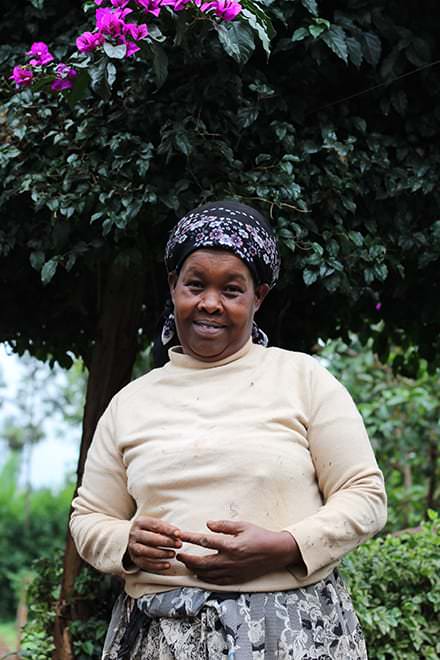
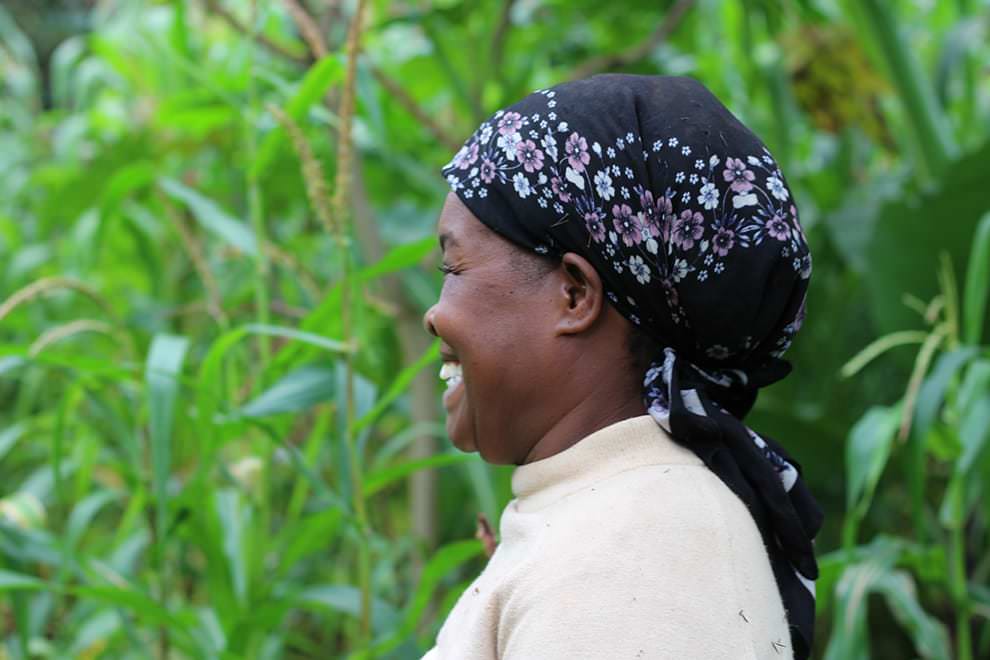
Susan smiles ear to ear when talking about the transformation she and her land have undergone since joining Trees for the Future in 2016. When she started, her situation was “not very good at all,” but today she knows how to plan and optimize her land to its fullest potential. Her family used to have very limited food options from their homestead and endured long periods of little variety in their diets. Now, she shows off her tomatoes, passion fruit, tree tomato, papaya, maize, cabbage, kale and potatoes — and that is just one section of her garden! She is able to eat a more diverse diet, while still having plenty of excesses to sell at market. Success at the market has allowed her to pay school fees for her children and grandchildren. As she talks about the future, she also shares her hope to establish enough capital to set up a grocery and produce store in the coming year. Susan’s plans for the future have grown substantially since starting the program, and she looks forward to maintaining her Forest Garden for years to come while teaching her children and grandchildren the valuable lessons she has learned through her training.
Name: Samuel Makena
Location: Ikinu, Kenya
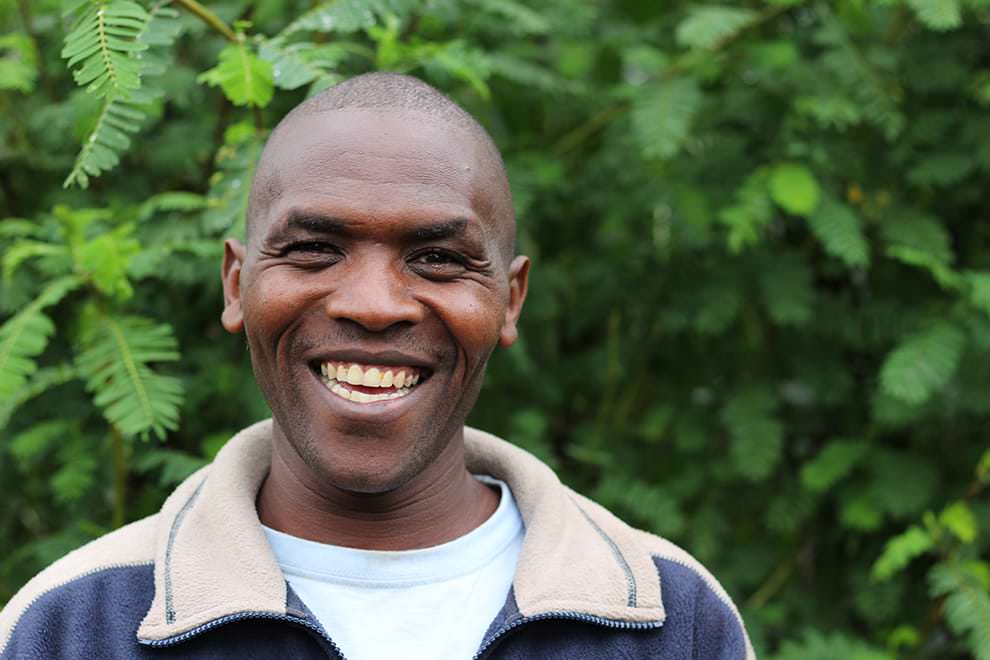

Samuel lives on his one-acre plot with his wife and three children. Year after year he grew the same crops with diminishing results. His soil was exhausted and he didn’t know how to improve his land and circumstance. He felt like his land was without plan or purpose, but in 2016 Samuel joined Trees for the Future and that all changed. He soon learned the importance of rotating his crops, his TREES technician taught him how to build a nursery and he began planning and planting with purpose. Samuel says his biggest success has come from learning to grow tomatoes in the off-season. Using his seasonal calendar training, Samuel is now planning his tomato crops around the high-demand periods when the market is void of tomatoes, and he is producing in droves. Where he used to grow only a few crops, Samuel now tends to many different vegetables, grains and fruits. With a living fence protecting his garden, fodder trees to feed his cows, fruit trees to feed his family and a variety of healthy vegetables year-round, Samuel said simple, “My land is smart.” Today, he is proud of his land and is thankful to be able to pass it down to his children and grandchildren someday.
Name: Obia Philip
Location: Kole, Uganda


Obia lives with his four children and wife in Kole, Uganda, and is finishing his second year with the Forest Garden Program. Obia finally feels secure feeding his family during the dry season. He and his wife previously grew only maize and sorghum on his land — harvesting and selling a few times a year. They needed to live off of their biannual proceeds year-round, which required careful savings and planning. This left them vulnerable to problems with their crops such as disease or pests, and dependent on unpredictable market prices. Now, Obia grows onions, eggplant, green pepper, tomato, pumpkin and boyo (a local leafy green) from seeds provided by Trees for the Future. Learning about the benefits of a vegetable garden, as well as the benefits of intercropping, Obia has added sweet potatoes, yams, sesame and cabbages on his own. He now has vegetables and fruits available on his own land throughout the year and his family no longer worries where their next meal will come from.
Name: Ramadhani Magwe
Location: Tumuli, Tanzania

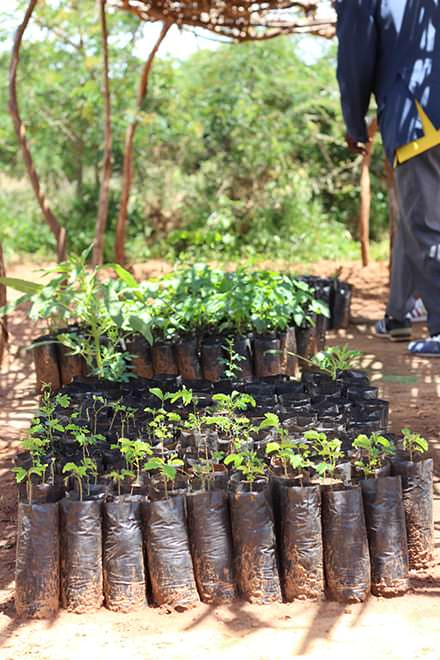
Ramadhani thanks Trees for the Future for giving his land a plan. Previously, Ramadhani broadcast seeds across his soil and hoped for the best. Much of his land was wasted and unused. He’s now thoughtful about how he plants, creating a living fence around his plot, and planting his seedlings in a nursery. He places his seedlings in well-spaced rows, and intercrops with trees. Through Trees for the Future, Ramadhani joined a farmer group, where he gets support and shares ideas. Together, they’ve built a larger nursery and spend time helping one another.
Name: Safia Bakari Hongoa
Location: Tumuli, Tanzania
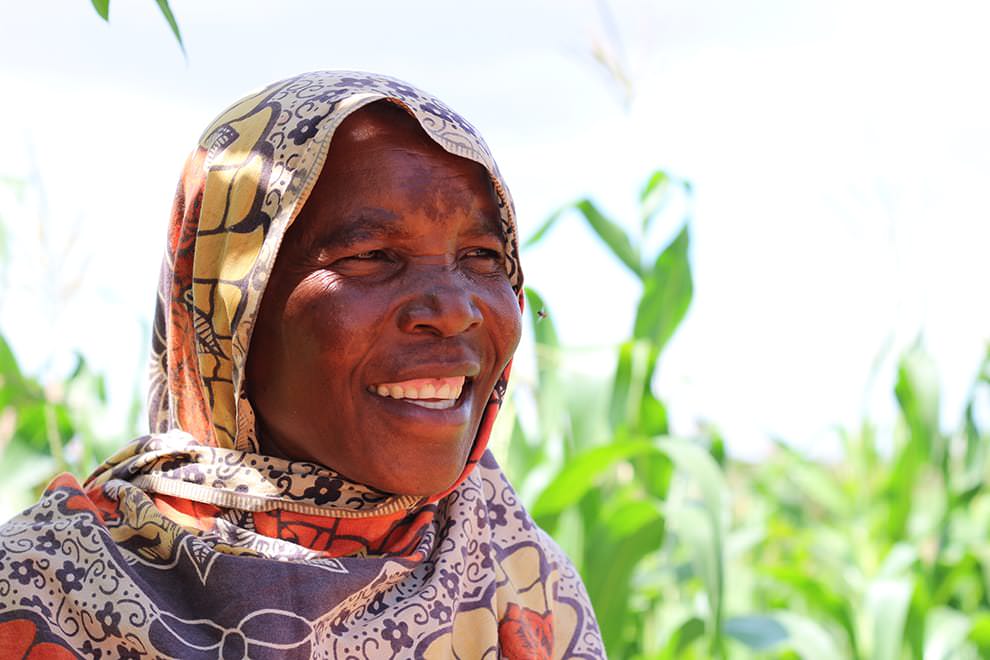
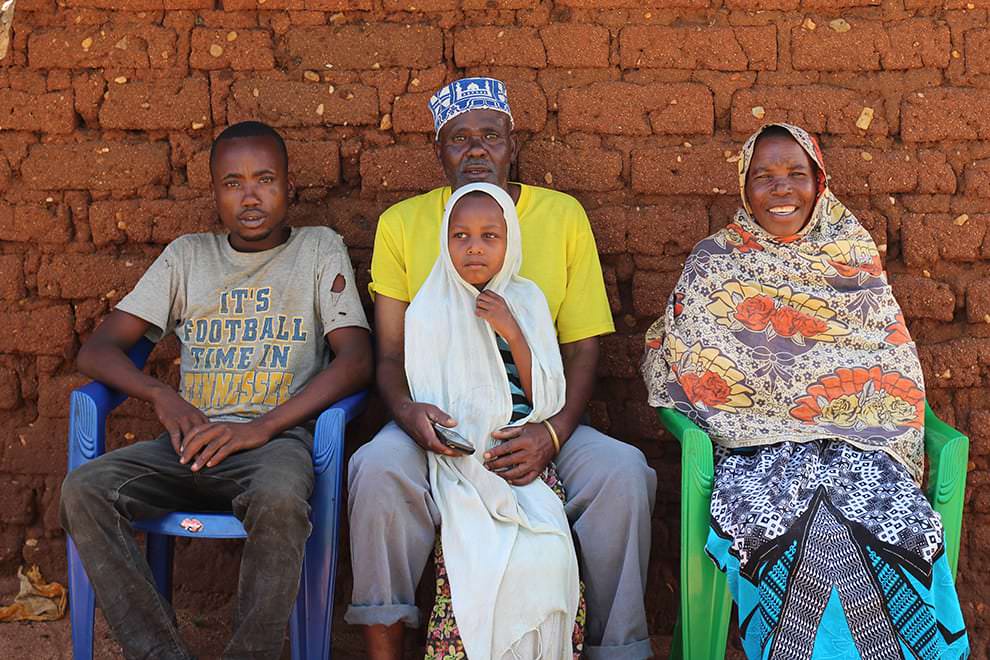
Ending her second year, Safia looks forward to her vegetables growing for her family to eat and to sell at market. She will grow okra, pumpkin, amaranth and spinach, alongside the sunflowers, maize, and chickpeas she currently grows. Through her training with Trees for the Future, Safia’s land has been given renewed purpose. She plans and plants crops thoughtfully to maximize her land and the health of the soil. Moreover, she enjoys the camaraderie of her farmer group and often barters and trades among the group. With the proceeds from selling vegetables at the market, Safia looks forward to establishing savings for the first time and hopes her children will be able to attend higher education.
SHOP FRAMING SUCCESS
filed under:

![]() Download this back to school checklist.
Download this back to school checklist.![]() Supply of No. 2 pencils
Supply of No. 2 pencils![]() Black or blue ballpoint pens
Black or blue ballpoint pens![]() Eraser
Eraser![]() Pencil sharpener
Pencil sharpener![]() Glue stick
Glue stick![]() Three ring binder
Three ring binder![]() Folders
Folders![]() Loose leaf paper
Loose leaf paper![]() Graph paper
Graph paper![]() Permanent markers
Permanent markers![]() Highlighters
Highlighters![]() Stapler
Stapler![]() Tape
Tape![]() Post-it-notes
Post-it-notes![]() Organizer/Planner
Organizer/Planner![]() Backpack
Backpack![]() Laptop
Laptop![]() Printer
Printer![]() Printer paper
Printer paper![]() New clothes for school
New clothes for school![]() Order yearbook (Sometimes you get discounts if you order early!)
Order yearbook (Sometimes you get discounts if you order early!)![]() Design your class ring (You don’t have to be a senior to wear a class ring.)
Design your class ring (You don’t have to be a senior to wear a class ring.)
